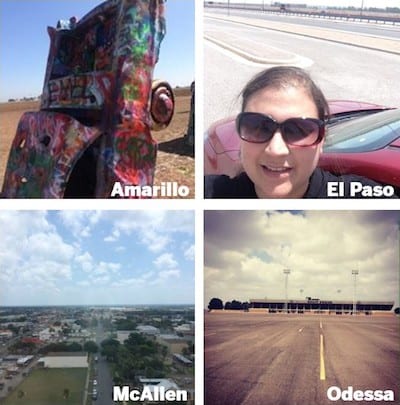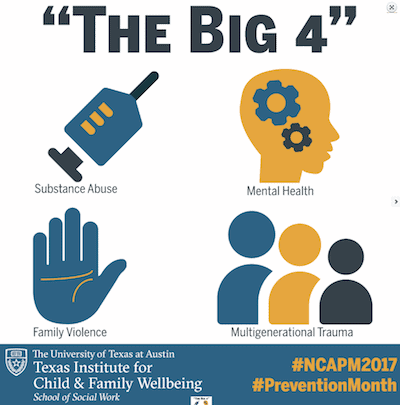Why we need to deal with substance abuse, mental health, family violence and multigenerational trauma to prevent child abuse and neglect.

Our research team at the Texas Institute for Child & Family Wellbeing is gearing up for what I like to call our “Tour of Texas.” We have the privilege of traveling to communities across our state to evaluate the implementation and effectiveness of child maltreatment prevention programs funded through the Department of Family and Protective Services. Last year we talked to 52 parents, 132 community members and 116 agency staff.
I primarily conducted interviews with Spanish-speaking parents. I have been a social worker for about 15 years now, and I rarely find myself taken aback, but I walked away from these interviews amazed. I was not surprised about the issues communities were facing with substance use, mental health, family violence or intergenerational trauma; I was pleasantly surprised by the similarities I saw across families regarding their strengths.
From Laredo to Longview, I sat with parents who had a deep love for their children and a desire to be the best parent they could be. When I would ask parents what they liked about the programs they were involved in, they would start by telling me how they now understand how to talk to their child and how to address their child’s behaviors effectively. Parents and grandparents who already raised multiple children reported that they learned things about child development and strategies that they wish they had known many years ago.
At the time I was conducting these interviews, I was in the midst of potty training my somewhat stubborn second child. The struggles that these parents relayed were similar to my own in the sense that parenting is tough and we all need a little help. Regardless of where you live in our state, country, and world, parenting is beautiful chaos.
 Within that beautiful chaos, some people will struggle more than others. When I asked community members, parents, and staff: “What drives child maltreatment in this area?” The top response was substance use and lack of treatment. They would then tell me about mental health issues, family violence and parents who just seemed to have an overwhelming number of risk factors. Sadly, most communities lack enough services to meet the needs of those parents.
Within that beautiful chaos, some people will struggle more than others. When I asked community members, parents, and staff: “What drives child maltreatment in this area?” The top response was substance use and lack of treatment. They would then tell me about mental health issues, family violence and parents who just seemed to have an overwhelming number of risk factors. Sadly, most communities lack enough services to meet the needs of those parents.
To prevent child maltreatment, we have to do two things. First, we have to build on strengths. Every family has some unique strength that we can build on. Next, we have to address what I call “The Big Four”: substance use, mental health, family violence and the parent’s own history of being maltreated, or multigenerational trauma.
In my opinion, every parent can benefit from parenting classes that give us new information and strategies as our children grow. However, to truly prevent child maltreatment, we have to offer more than parenting skills. We have to help parents by providing non-punitive supports to deal with the Big Four, we have to provide universal screening so we catch all parents who might need help, we have to allow parents to be in treatment and keep their children with them, and most importantly, we have to change our social norms. We have a tendency to judge parents and push them into isolation with their problems. As a society, we need to normalize the beautiful chaos of parenting and lend a hand to each other.

